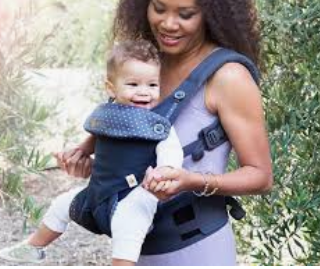There are several ways to carry a baby with the help of several types of equipment, in front of the chest or at the back. The most common are baby carriers that come in a soft padded bag-type that the adults wear. Straps are adjustable and with various sizes to provide enough support for the baby. Unlike a baby carrier, baby slings are pouches or strips of fabric, fastened over the shoulder and worn across the adults’ front. They can go in different positions, depending on the convenience of the one wearing it.

Baby backpacks, on the other hand, have stiff frames. They go at the back like regular backpacks do. These types are fit for toddlers and those who can already hold up their heads. To be safe, refer to the medical experts if the baby is old enough for this type of carrier. Using baby carriers is definitely advantageous since adults can go hand-free, and babies can watch the world go by while they go for a walk. Learning how to use them properly is a must to ensure that the little ones are safe even when they’re just right in front or at the back of their parents.
Newborns Can Already Use Them
Adults think that newborn babies can’t use baby carriers until they are 10 weeks old and above. However, babies can, since the day they’re born, as long as they are at least seven pounds. Babies must stay close to their parents right from day one. That may be possible with both hands, but using a baby carrier makes the job a whole lot easier. Remember to check on the baby’s weight before anything else; otherwise, they just won’t fit if they’re still too small.
Research About Types Of Carriers
With so many kinds of baby carriers in the market, it gets overwhelming for first-time parents to find the right one. Popular types are the slings, wraps, and soft-structured ones. When performing the research, look into the reviews about the safety and functionality, these are the most crucial features to consider before getting one. Additionally, seeking recommendations from experienced parents can provide valuable insights. Try to explore reputable options such as Wildbird baby carriers, for instance, so exploring various options and gathering firsthand experiences can help in making an informed decision.
Familiarise The Carrying Positions
Because they go in different types, it means they also have different carrying positions. These include front outward facing, front inward facing, back carry, and hip carry, all of which have weight requirements before they can fit into a particular position. Aside from the equipment’s manual, check with the pediatrician if the baby can be in that position. Every baby has a unique physical development phase, and some may still be too fragile even if they reached the required weight.
Practice How To Use It For Safety Purposes
Whether it’s the adults’ first time to use it or not, it is wise to learn how to use the equipment, especially if they haven’t seen it before. Every now and then, baby carriers have new features or updated models; adults should learn how to navigate it. This way, babies are comfortable and safe by the time they are in the carriers. Also, familiarising every function of the carrier means maximising every available feature on it.
Finding the right baby carrier, especially for first-timers, can be tough. Ask friends, read reviews, and do research; all these can help gather as much information as possible. The more knowledgeable the adults are, the safer for their babies.



